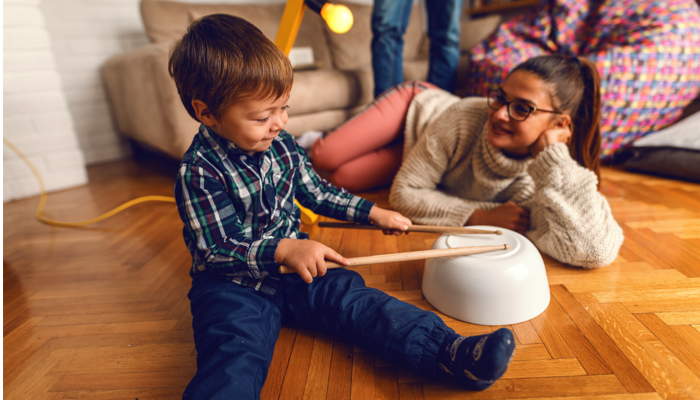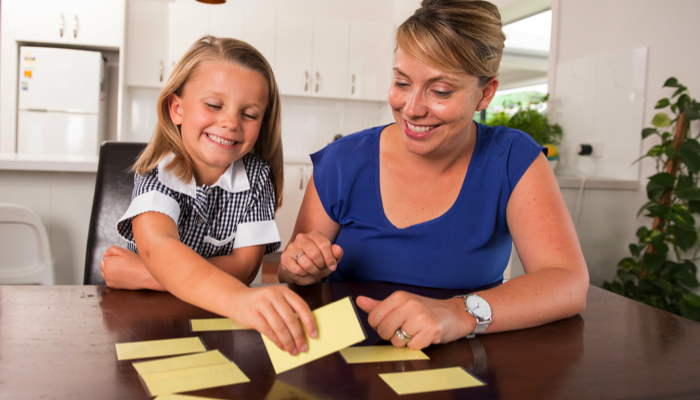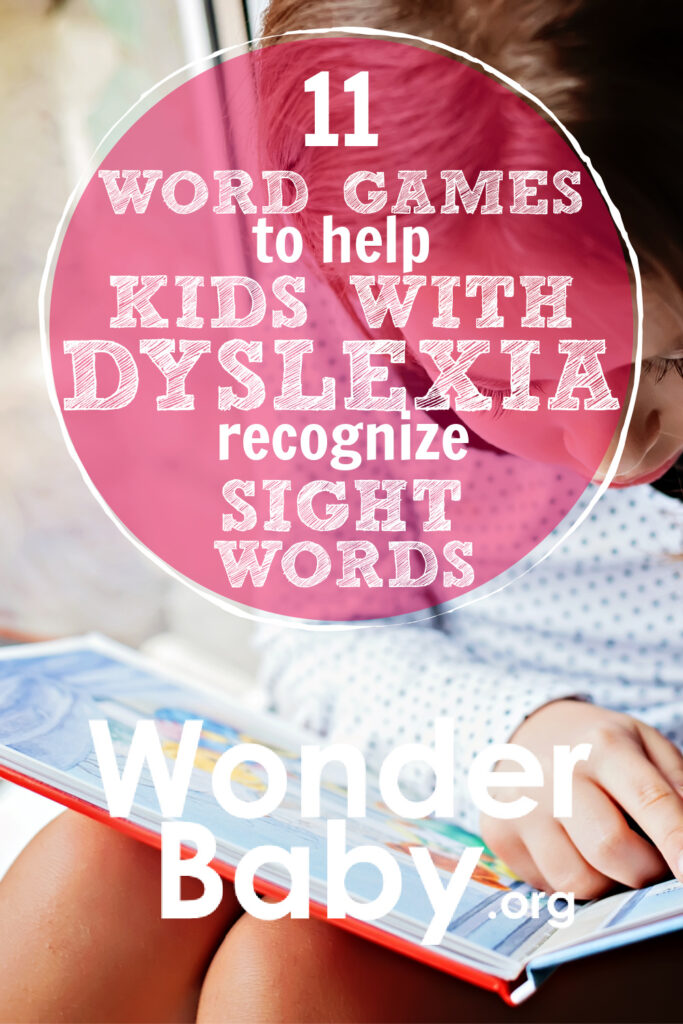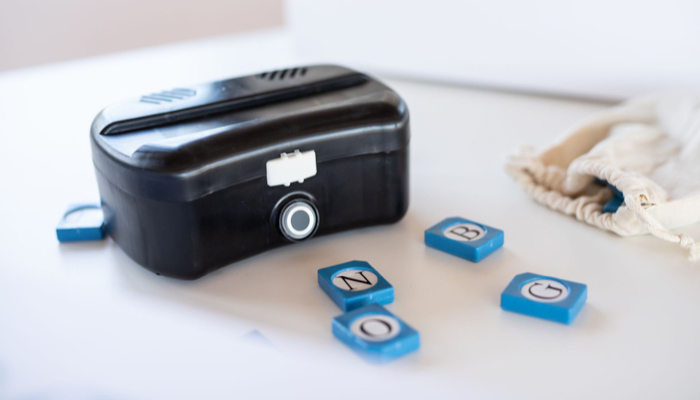11 Word Games to Help Kids With Dyslexia Recognize Sight Words

This post may contain affiliate links; please see our terms of use for details.
Dyslexia is a learning disability that makes it difficult for students to read, write, and spell. It affects about 20% of the population, making it one of the most common learning disorders. Kids with dyslexia aren’t lazy or of low intelligence, but they do process information differently and can benefit greatly from creative and multi-sensory approaches to learning.
How do you know if your child has dyslexia? Beyond trouble with reading or spelling, some other signs to look for may be difficulty understanding left versus right; trouble memorizing things like addresses, the alphabet, or multiplication tables; inability to create or memorize rhyming words; getting easily lost or turned around, even in a familiar environment.
Although dyslexia is considered a brain processing disorder, it can’t be diagnosed by a brain scan. If you suspect that your child does have dyslexia, talk to your school’s educational psychologist about getting tested. Your child’s pediatrician can also help you get tested and properly diagnosed.
Diagnosis is key! Once you have a diagnosis of dyslexia, you can begin tailoring your child’s learning instruction to fit their learning needs!
Reading, Phonics, and Dyslexia
Most kids learn to read through phonics instruction, a reading strategy that encourages early learners to recognize sound patterns when reading. Remember when you were a child and your teacher told you to “sound it out” when you had trouble reading a word? That’s phonics!
Kids with dyslexia, however, have a very hard time matching corresponding sounds to letters as well as connecting sounds with meaning, making phonics instruction very difficult for them.
Children with dyslexia also have difficulty remembering words that can not be taught using a phonics approach, such as high-frequency sight words. Sight words are words that appear often in text, but can not be sounded out because they don’t follow conventional spelling rules and must be learned as whole words. Examples of sight words are the, to, you, was (check out this list of 100 sight words for more). These words are staples to reading since they are used so often, but if we teach kids to rely solely on “sounding out” the letters, they could get really confused!
So, how can you engage students in sight word instruction when it is such a difficult task? Use a multi-sensory approach connected to their interests to increase engagement! In my experience, students with dyslexia often respond best to unconventional teaching methods, such as crafting lessons incorporating the M&M’s: Movement, music, and memory.
How to Make Reading Instruction Fun!
Children with reading challenges require many extra repetitions of new information for mastery. When I remind parents to remember M&M’s while working on reading at home, I am telling them to keep learning fun! Using a multisensory approach at home to reinforce reading skills, especially when connected to your child’s interests, will increase engagement and provide the repetition their brains require.
Remember: To preserve healthy self-esteem when practicing reading skills at home, parents should provide the letter, or letter sound, or word before their child shows signs of frustration. Again, with a learning is fun at-home emphasis!
Here are some examples for practicing high-frequency sight words at home. Be creative and try to incorporate your child’s interests into these games!
Move Your Body!
Who says you need to sit still while reading? Incorporating movement activities will improve children’s ability to focus by using their sense of touch.

- Write a different high-frequency word in each square of a hopscotch grid in sidewalk chalk. As your child jumps on each word, they read it out loud!
- Lay word cards on the floor, provide a cute fly swatter, and have your child tap each word while reading it.
- Scavenger word hunts are always a fun way to practice reading high-frequency words! As your child finds a hidden word card, they read it before searching for another.
- Pick up a word card during movement exercises. For example, do a jumping jack, turn around once, reach to the sky, and pick up the word ‘from.’
- Hide the letters of a sight word in play-doh and have your child dig the letters out and place them in the correct order.
Sing Along to the Music!
Rhythm and singing games improve spelling, phonological, and auditory skills. Bring out those kids’ drums and shakers and get ready to sing your way to reading proficiency!

- Have your child beat a drum or shake a shaker while spelling a word.
- Have your child sing and spell words to a tune such as Jack Hartmann’s Sight Word Rap or Ready to Read Sight Words.
- A favorite song can be used to reinforce sight word recognition too. Provide a sight word card, and every time your child hears the word when the song is played, they read it! The word ‘me’ is used three times and the word ‘my’ twice in the song I’m A Little Teapot!
- Print out the song lyrics to a favorite song and have your child highlight the sight words!
Play Memory Games
Playing memory games will improve visual recognition, attention to detail, and concentration.

- Play a memory matching game, but with sight words! Write each word twice on separate word cards and lay them face down. Each player turns one over and reads it, turns another over and reads it; if they match, the player keeps the pair; if not, the cards are returned face down in the same spot.
- Go on a ‘word hunt’ to find a particular sight word by hiding the letters that make up the word. Tell your child to find the 3 letters that spell the word ‘and’ for example. As your child finds each letter, they predict if it’s the first letter of the word, the last letter, or in the middle.
Other Tips to Help Kids With Dyslexia Learn To Read
Keep learning fun and try different approaches. Find activities that excite and interest your child!
- Listen to audiobooks
- Use a whisper phone
- Make reading multi-sensory
- Look for apps that turn reading into a game
- Give lots of praise
- Encourage reading slowly
- Overlook poor spelling when first starting out

Related Posts

IEPs
What Should I Bring to My Child’s First IEP Meeting?
Prepare for your child's first IEP meeting with confidence! Discover exactly what documents to bring, including educational records, medical info, and questions to ask.

Braille and Literacy
Making Braille Fun: Introducing Handi Exceller’s Innovative Learning Tools for Blind Students
Handi Exceller was born from a simple idea: learning braille should be both fun and accessible. The company creates interactive and gamified ways to teach braille.

Braille and Literacy, Toys, Visual Impairment
24 Braille Toys for Kids Who are Blind
Everything from alphabet blocks to raised line coloring pages and activity books to puzzles to card and board games... and so much more! And it's all in braille ready for...